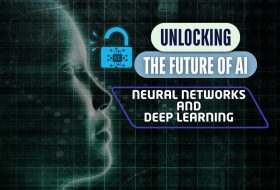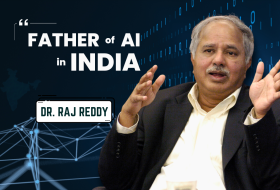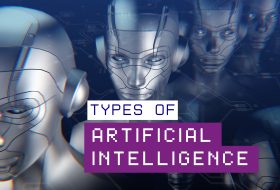What if the prospect of Artificial Intelligence (AI) is not just confined to recognizing images, but instead involves understanding and interacting with the world in ways we never thought possible? Could neural networks, which are inspired by the human brain, mature to perceive not just visual information but also interpret sounds, feel textures, predict behaviour, or even compose music?
While neural networks have conventionally been associated with visual recognition, think self-driving cars and facial recognition, there is much more to this technology. We are standing on the cusp of a pioneering change where neural networks are no longer restricted to visual tasks. From healthcare to autonomous robotics, climate science, and creative arts, neural networks are disrupting various sectors. This article sheds light on these progressive systems moving far beyond vision to handle a wide array of unprecedented challenges.
What are neural networks and how do they work?
Neural networks are computational models at their core, reflecting the architecture of the human brain. These models comprise layers of interconnected neurons (or nodes), with each connection passing data and adjusting themselves based on the learning from that data. The network gets better at identifying patterns and making predictions as it processes more data. Neural networks find their application in image recognition tasks such as identifying objects in photos, processing video streams, or detecting anomalies in visual data. However, at present, neural networks are evolving to become multimodal, integrating a multitude of data types including images, audio, text, and sensory data as well. This multimodal neural network is developing to solve intricate problems.
Expanding beyond vision: Multimodal NN
1. Natural language processing (NLP) and speech recognition
Neural networks now possess the ability to understand, generate, and translate human language with a depth of comprehension that was once thought to be the domain of human intelligence alone. Recent breakthroughs such as OpenAI’s GPT-4 and Google’s BERT have elevated NLP capabilities. This has enabled machines to comprehend nuances, context, and sentiment in conversations. Even big organizations such as Microsoft and Amazon have extended the use of NLP to improve customer support with chatbots that are able to make sense of complex queries and respond to them. Similarly, speech recognition technology, portrayed by Google Assistant and Apple’s Siri, is improving in accuracy. They are now responding to voice commands more naturally and with greater context.
2. Diagnostics and predictive modeling
Besides image-based neural networks (such as those utilized to analyze X-rays and MRIs) that are highly regarded, the future of healthcare AI lies in multimodal data i.e. integrating multiple sources of patient data (medical history, genetic data, lifestyle, and environmental factors) to make a more precise and comprehensive diagnosis. AI is not limited to identifying diseases through images. It is now predicting diseases long before symptoms appear by analyzing an individual’s health data.
One of the prominent instances of this development is Google Health’s AI model. This model successfully predicts breast cancer risk more accurately than radiologists by evaluating mammograms in conjunction with patient’s health records. Another example is DeepMind’s AI for diabetic retinopathy detection. This has helped several doctors in the identification of potential eye diseases in diabetic patients through simple scans.
3. Autonomous systems: Extending past visual sensors
Autonomous systems, now need to process multiple forms of data that include visual, auditory, and even tactile, to assess information and react to intricate situations. For example, autonomous drones and robots use a mix of LIDAR, radar, and audio sensors to move through environments, make choices, and interact with people. This requires multimodal AI, which can combine different types of sensory data into clear actions. Tesla’s Autopilot system has already disrupted the self-driving car market by combining radar, ultrasonic sensors, and cameras to process environmental data. However, the next-gen autonomous systems will include highly sensitive sensors and neural networks that understand sound, such as the detection of sirens, horn signals, or even voice commands.
4. Creative implementation of neural networks
Creativity was once considered the exclusive domain of humans. But this field is now being extended by neural networks. Deep learning models are employed to generate art, music, and literature. This has enabled AI to venture into spaces that demand human intuition and originality. Neural networks can now generate visual art that imitates famous artists or design completely fresh styles. AI-generated music also has made an impact, with networks learning to compose symphonies and melodies that evoke diverse emotions and even match specific themes or genres. In the context of writing, neural networks is producing poetry and novels, contributing to literature in ways that were once unimaginable.
Some of the examples include OpenAIs MuseNet capable of producing complex music compositions, simulating styles ranging from classical to modern genres. DeepArt is another tool that allows users to turn photographs into paintings in the style of Van Gogh or Picasso.
5. Gaming and advanced simulations
AI technologies including neural networks have transformed the gaming industry in a big way. Neural networks are being used to develop adaptive non-playing characters or NPCs that learn from players and the gaming environment. This has made interactions much more realistic as well as dynamic. NPCs based on neural networks adapt to player behaviour, modify their strategies, and develop throughout the game. This provides an unpredictable yet more personalized experience. You must have heard of DeepMind’s AlphaStar system, which plays StarCraft II. This game uses deep reinforcement learning to constantly refine its strategies and adjust to human players’ tactics.
Emerging Patterns in Neural Networks
1. Neuromorphic computing – This field is at a nascent stage and is focused on designing hardware that simulates the architecture and processes of the human brain. Neuromorphic systems promise to make neural networks more energy-efficient, facilitating complex processing with lower costs.
2. Quantum AI – A combination of quantum computing with neural networks could create systems capable of untangling intricate problems exponentially faster than contemporary technologies.
3. Explainable AI (XAI) – Researchers are developing methods to make neural networks more interpretable. Some of these methods are DeepLIFT (Deep Learning Important FeaTures), Saliency Maps, SHAP (Shapley Additive Explanations), and LIME (Local Interpretable Model-Agnostic Explanations). This is designed to make their decisions clear and credible.
Conclusion
Neural networks are gaining momentum in recent times, surpassing their capability beyond the realms of visual recognition.










